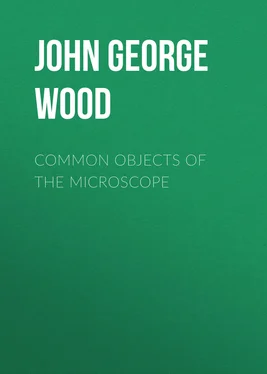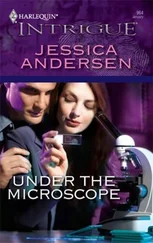John George Wood - Common Objects of the Microscope
Здесь есть возможность читать онлайн «John George Wood - Common Objects of the Microscope» — ознакомительный отрывок электронной книги совершенно бесплатно, а после прочтения отрывка купить полную версию. В некоторых случаях можно слушать аудио, скачать через торрент в формате fb2 и присутствует краткое содержание. Жанр: foreign_prose, foreign_antique, на английском языке. Описание произведения, (предисловие) а так же отзывы посетителей доступны на портале библиотеки ЛибКат.
- Название:Common Objects of the Microscope
- Автор:
- Жанр:
- Год:неизвестен
- ISBN:нет данных
- Рейтинг книги:4 / 5. Голосов: 1
-
Избранное:Добавить в избранное
- Отзывы:
-
Ваша оценка:
- 80
- 1
- 2
- 3
- 4
- 5
Common Objects of the Microscope: краткое содержание, описание и аннотация
Предлагаем к чтению аннотацию, описание, краткое содержание или предисловие (зависит от того, что написал сам автор книги «Common Objects of the Microscope»). Если вы не нашли необходимую информацию о книге — напишите в комментариях, мы постараемся отыскать её.
Common Objects of the Microscope — читать онлайн ознакомительный отрывок
Ниже представлен текст книги, разбитый по страницам. Система сохранения места последней прочитанной страницы, позволяет с удобством читать онлайн бесплатно книгу «Common Objects of the Microscope», без необходимости каждый раз заново искать на чём Вы остановились. Поставьте закладку, и сможете в любой момент перейти на страницу, на которой закончили чтение.
Интервал:
Закладка:
Fig. 4.
These remarks must suffice for our present purpose. Those who are sufficiently interested in the subject to desire to know more of the delicate corrections to which these broad principles are subjected in practice, that objectives may give images which are clear and free from colour, to say nothing of other faults, will do well to consult some such work as Lommel’s Optics , in the International Science Series.
In following a work such as the present one, the simple microscope, in some form or other, will be found almost indispensable. It will be required for examining raw material, such as leaves or other parts of plants, for gatherings of life in fresh or salt water, for dissections. With such powers as those with which we shall have to deal, it will rarely happen that, for example, a bottle of water in which no life is visible will be worth the carrying-home; whilst, on the other hand, a few months’ practice will render it not only possible, but easy, not only to recognise the presence, but to identify the genus, and often even the species, of the forms of life present. Moreover, these low powers, affording a general view of the object, allow the relation to each other of the details revealed by the power of the compound microscope to be much more easily grasped. A rough example may suffice to illustrate this. A penny is a sufficiently evident object to the naked eye, but it will require a sharp one to follow the details in Britannia’s shield, whilst the minute scratches or the bloom upon the surface would be invisible in detail without optical aid. Conversely, however, it would be rash to conclude from an examination of a portion of the surface with the microscope alone that the portion in view was a sample of the whole surface. The more the surface is magnified, the less are the details grasped as a whole, and for this reason the observer is strongly recommended to make out all that he can of an object with a simple magnifier before resorting to the microscope.
For general purposes, the intending observer cannot do better than supply himself with a common pocket-magnifier, with one, two, or three lenses, preferably the last, as although the absolute performance is not so accurate, the very considerable range of power available by using the lenses singly, or in various combinations, is of great advantage. Such a magnifier may be obtained from Baker for about three-and-sixpence, or, with the addition of a powerful Coddington lens (Fig. 5) in the same mount, for nine shillings more. Aplanatic lenses, such as the one shown in section in Fig. 6, with a much flatter field of vision, but of one power only each, cost about fifteen shillings, and a simple stand, which adapts them for dissecting purposes, may be obtained of the same maker for half a crown, or may easily be extemporised from a cork sliding stiffly on an iron rod set in a heavy foot, the cork carrying a loop of wire terminating in a ring which carries the lens.
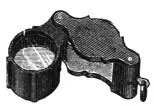
Fig. 5.
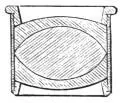
Fig. 6.
So much may suffice for the simple microscope. We pass on now to the consideration of the instrument which forms the subject of the present work, an instrument which, whilst moderate in price, is yet capable of doing a large amount of useful and valuable work in the hands of a careful owner, and of affording him a vast amount of pleasure and recreation, even if these be his only objects in the purchase, though it is difficult to understand that, an insight being once attained into the revelations effected by the instrument, without a desire being excited in any intelligent mind to pursue the subject as a study as well as a delightful relaxation. The microscope described, and adopted as his text by the author of this work, is still made, and has shared to a very considerable extent in the general improvement of optical apparatus which has taken place during the last thirty years. It is to be obtained from Baker, 244 High Holborn, and is provided with most of the apparatus which will be found indispensable by the beginner, costing, with a case in which to keep it, the modest sum of three guineas.

Fig. 7.
If this instrument represent the limit of the purchaser’s power of purse, he may very well make it answer his purpose for a considerable time. The same instrument, however, with separate objectives of good quality, together with a bull’s-eye condenser (an almost indispensable adjunct), a plane mirror in addition to a concave one, and a simple but efficient form of substage condenser, may be obtained for £5, 12s. 6d., and the extra outlay will be well repaid by the advantage in working which is gained by the possession of the additional apparatus.
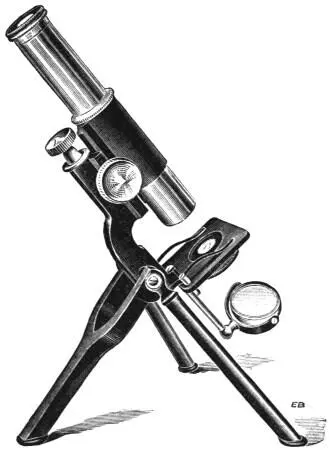
Fig. 8.
A still better stand, and one which is good enough for almost any class of work, is that shown in Fig. 8, which is known as the “Portable” microscope. In this instrument the body is made up of two tubes, so that the length may be varied at will, and this gives a very considerable range of magnification without changing the object-glass, a great convenience in practice; whilst the legs fold up for convenience of carriage, so that the whole instrument, with all necessary appliances, may be readily packed in a corner of a portmanteau for transport to the country or seaside.
The objectives supplied with the simplest form of microscope above referred to are combinations of three powers in one, and the power is varied by using one, two, or three of these in combination. This form of objective is very good, as far as it goes, though it is impossible to correct such a combination with the accuracy which is possible in manufacturing one of a fixed focal length.
Perhaps the best thing for the beginner to do would be to purchase the combination first, and, later on, to dispose of it and buy separate objectives of, say, one-inch, half-inch, and quarter-inch focal lengths. It may be explained here, that when a lens is spoken of as having a certain focal length, it is meant that the magnification obtained by its use is the same, at a distance of ten inches from the eye, as would be obtained by using a simple sphere of glass of the same focal length at the same distance. This, of course, is simply a matter of theory, for such lenses are never used actually.
Fig. 9.
Of accessory apparatus, we may mention first the stage forceps (Fig. 9, a ). These are made to fit into a hole upon the stage, so as to be capable of being turned about in any direction, with an object in their grasp, and for some purposes, especially such as the examination of a thin object, say the edge of a leaf, they are extremely useful.
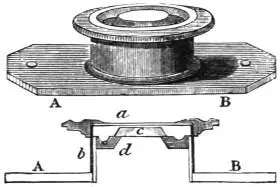
Fig. 10.
The live box, in which drops of water or portions of water-plants, or the like, may be examined, will be found of great service. By adjustment of the cap upon the cylinder, with proper attention to the thickness of the cover-glass in the cap, any required amount of pressure, from that merely sufficient to fix a restless object to an amount sufficient to crush a resistent tissue, may easily be applied, whilst the result of the operation is watched through the microscope. This proceeding is greatly facilitated if the cap of the live-box be slotted spirally, with a stud on the cylinder, so that a half-turn of the cap brings the glasses into contact. By this means the pressure may be adjusted with the greatest nicety.
Читать дальшеИнтервал:
Закладка:
Похожие книги на «Common Objects of the Microscope»
Представляем Вашему вниманию похожие книги на «Common Objects of the Microscope» списком для выбора. Мы отобрали схожую по названию и смыслу литературу в надежде предоставить читателям больше вариантов отыскать новые, интересные, ещё непрочитанные произведения.
Обсуждение, отзывы о книге «Common Objects of the Microscope» и просто собственные мнения читателей. Оставьте ваши комментарии, напишите, что Вы думаете о произведении, его смысле или главных героях. Укажите что конкретно понравилось, а что нет, и почему Вы так считаете.
